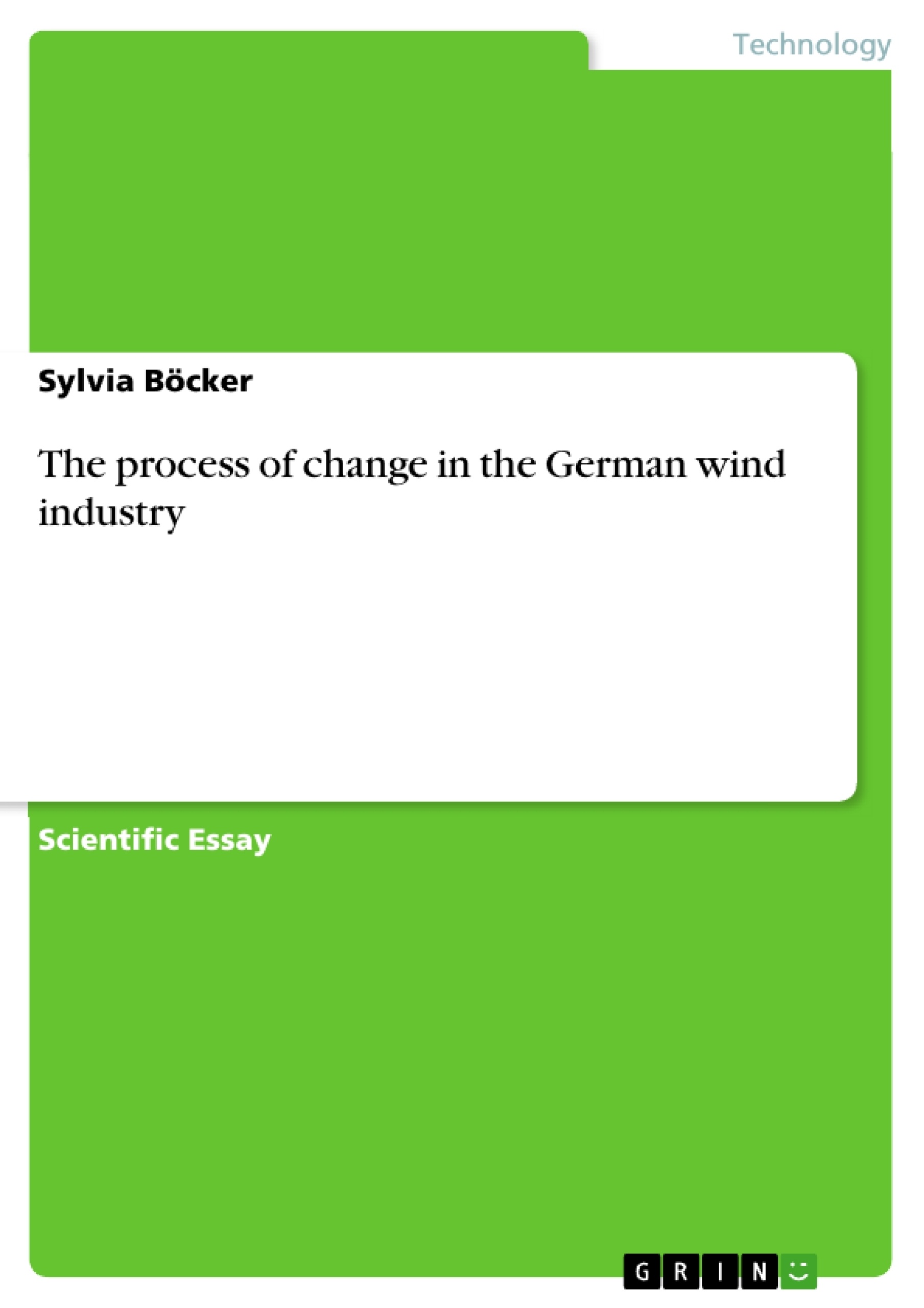The paper identifies the necessity of a deep change process in the German wind industry. The need for change in the wind industry was given by the decision of the German government to finish nuclear energy production in the year 2022. The Fukushima accident lead to this decision and showed dramatically the urgency of finding solutions for a stable and sustainable energy production based on renewable energies. The advantages of using decentralized wind energy which is possible through installation of small wind turbines is so far less acknowledged in politics and economics. The amount of investment and the market share of small wind technology are minimal against their potential and compared to the investments which are put in centralized wind energy production with big 3 bladed turbines. The reduction of the costs for the transmission lines and the electrician transmission losses could be a major economical factor to the point that one could have a parallel grid to fulfil the requirements for power of special regions. To increase the percentage of decentralised produced wind energy it is necessary to identify the key reasons which minimise the success of the innovations in the field of small wind technology. Key factors are f.e. high costs for development and high governmental regulations as well as the lack of suitable technology. Another reason can be seen in the thinking of the core persons and decision makers in this business field as well as in politics. To be able to analyse the complex situation and get an understanding of the interconnection of different levels in this industry the systemic model by David Kantor is used which includes the normally less acknowledged level of mental models in economics.
Inhaltsverzeichnis (Table of Contents)
- Introduction
- Methods and resources
- Map of Change Process
- Team Learning Model
- Results
- The broader structures of the "German big 3- bladed" wind energy
Zielsetzung und Themenschwerpunkte (Objectives and Key Themes)
This paper aims to analyze the potential of decentralized small wind technology in the German wind industry and identify the factors hindering its widespread adoption. The paper explores the need for change in the German wind industry, driven by the government's decision to phase out nuclear energy. It focuses on understanding the limitations of small wind technology, particularly the high development costs and regulations, as well as the role of mental models in influencing decision-making.
- The need for change in the German wind industry, driven by the transition from nuclear to renewable energy sources.
- The potential of decentralized small wind technology as a viable alternative for energy production.
- The challenges and hindering factors that limit the adoption of small wind technology, including cost, regulations, and mental models.
- The application of systemic models to analyze the complex dynamics within the wind industry.
- The importance of understanding cultural and individual beliefs in shaping the adoption of new technologies.
Zusammenfassung der Kapitel (Chapter Summaries)
The introduction presents the German wind industry as a significant player in the renewable energy sector, primarily focused on centralized wind energy production. The paper highlights the increasing need for renewable energy alternatives due to the phasing out of nuclear power. The paper outlines the importance of exploring the potential of decentralized wind energy, particularly small wind technology, as a means to achieve energy independence and sustainability.
The “Methods and Resources” section explains the paper's methodology and framework. It introduces Richard Beckhard's change model and David Kantor's systemic model as tools for analyzing the change process within the German wind industry. The paper utilizes a market research approach, examining economic, environmental, political, social, technical, and organizational factors influencing the industry.
The “Map of Change Process” section presents a visual representation of Beckhard's change model, highlighting key stages in a successful change process. It emphasizes the importance of understanding the current situation, defining a desired future state, and effectively managing the gap between the two.
The “Team Learning Model” section delves into Kantor's systemic model, outlining different levels of structure within organizations and the interconnectedness of these levels. The section underscores the significance of considering both visible and invisible structures, particularly mental models and beliefs, to understand the dynamics within the wind industry.
Schlüsselwörter (Keywords)
The key focus of this paper revolves around renewable energy, sustainable energy, and the German wind industry. Key concepts include decentralized energy, small wind technology, mental models, and systemic models. The paper investigates the challenges and opportunities associated with integrating small wind technology into the broader energy landscape.
- Arbeit zitieren
- Sylvia Böcker (Autor:in), 2012, The process of change in the German wind industry, München, GRIN Verlag, https://www.grin.com/document/200258



